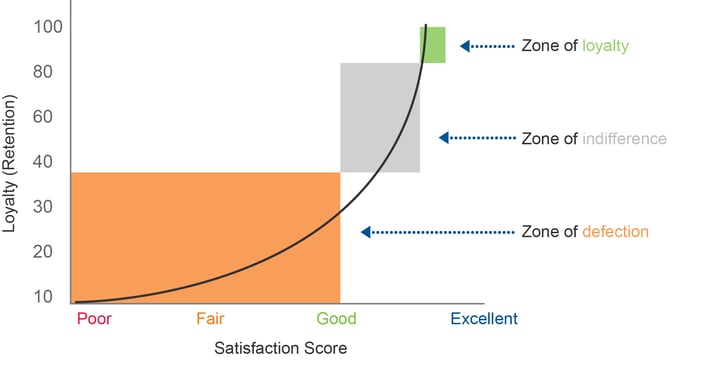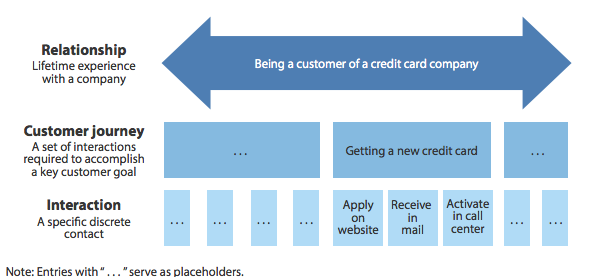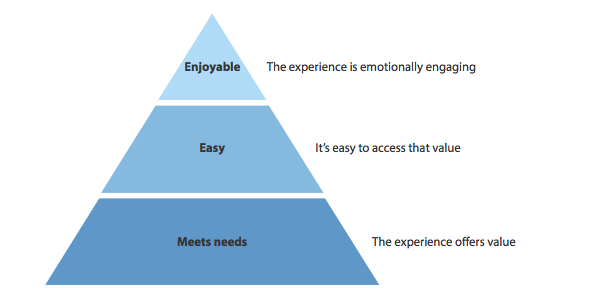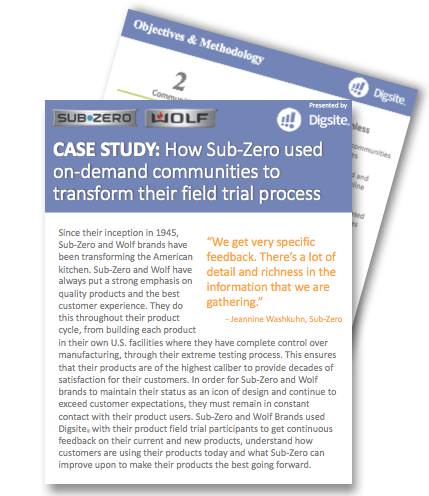Companies that focus on delivering outstanding customer experiences benefit from increased customer loyalty and higher revenue. At the same time, a significant majority of CEOs believe their organizations are providing great customer experiences when only a small fraction of their customers share that opinion.
In this blog post, we'll help you:
- Learn what the customer experience is and why your brand should care
- Examine the relationship between the customer experience and a company's bottom line
- Define 3 important levels of measurement for customer experience
- Learn how to increase your chances of leaving customers with a positive experience
(Note: This is the first of a 2-part series on advancing the customer experience. In the second part in this series, we explore how companies can use modern qualitative research solutions to inform their customer experience strategies and drive competitive advantage.)
Introduction:
Smart businesses are always focused on doing everything within their power to improve the customer experience.
The Harvard Business Review defines the customer experience (CX) as “the sum totality of how customers engage with your company and brand, not just in a snapshot in time, but throughout the entire arc of being a customer.”
In other words, it’s not enough to be extremely pleasant and add value during a single interaction with a customer. Companies need to consistently go above and beyond—every time.
Yet that’s not always what happens.
One recent study found that 80% of CEOs believed that their firms offer superior customer experiences. The problem? Only 8% of their customers agreed with that assessment.
Delivering great customer experiences is more than just a nice thing to do. Data suggests optimal CX can pay enormous dividends down the road. Consider these stats:
- It’s anywhere between 5 and 25 time more expensive to acquire a new customer than retain an existing one
- Increasing customer retention rates by 5% can increase profits by 25% to 95%
- While only 15% of your customer base may be considered loyal, those folks can account for up to 70% of sales
- 86% of customers are willing to pay up to 25% more for a product that’s accompanied by an awesome customer experience
- On the flipside, 89% of customers will look for a substitute brand following a poor customer experience
The relationship between customer satisfaction and customer loyalty is highlighted below:
 [B2B International: Customer Satisfaction Surveys & Research: How to Measure CSAT]
[B2B International: Customer Satisfaction Surveys & Research: How to Measure CSAT]
Anything below an excellent satisfaction score puts your company at risk of losing customers.
From the customer’s point of view, CX begins the moment they discover a company or learn about a product. A customer might be browsing Twitter when they stumble across a brand for the first time, for example.
Imagine a customer is in the market for a new bed. After doing some research, that person learns of Casper, a bed and mattress manufacturer that ships its products directly to the people who buy them, cutting out the middlemen.
In this instance, the customer experience would include the shopper’s perception of the brand’s personality and content; how easy it was to shop and pay for an item; whether products were shipped quickly; how they were packaged; and how customer service representatives conducted themselves when the individual had questions, among other things.
Unfortunately, there isn’t an instruction manual you can follow to ensure the customer experiences you offer are superior. That’s because the customer experience includes whatever the customer themselves believe it should include.
How can you know? If it’s super difficult to finalize a transaction or a product arrives damaged, the experience will likely be an unenjoyable one.
It is important to constantly examine your CX to make sure it is a positive one. Forrester provides 3 important levels of measurement when examining CX:
 [Forrester: Seven Steps to Successful Customer Experience Measurement Programs]
[Forrester: Seven Steps to Successful Customer Experience Measurement Programs]
CX is delighting your customers—or not delighting them—as they move from touchpoint to touchpoint. In order to unlock the maximum lifetime value for each of your customers, it’s imperative that positive customer experiences are the norm.
But how exactly is that accomplished?
Customer Experience the Right Way
Creating great experiences starts with setting the right expectations about everything your company does.
Whether they’re browsing your mobile app, talking to your sales team, dealing with a support specialist, getting an invoice from the accounting department or talking to a receptionist, customer expectations must always be met—if not exceeded.
Forrester also provides a customer experience pyramid to map out an optimal progression of customer experiences as shown here:
 [Forrester: Seven Steps to Successful Customer Experience Measurement Programs]
[Forrester: Seven Steps to Successful Customer Experience Measurement Programs]
The goal is to reach the top of the pyramid with every customer, otherwise, your customers will take their business elsewhere. Just ask cable companies.
Here’s how you can increase the chances your customers leave each interaction with a smile on their faces:
- Don’t make an offer you’re unable to fulfill. State very clearly what your product does and what your services are. Remember, the customer experience doesn’t stop when money changes hands. Let your customers know what they can expect moving forward (e.g., support and resources).
- Give your customers a consistent experience as they move across channels. If your customer is using a laptop to add items into their cart on your ecommerce site, that individual needs to be able to complete the same purchase on their mobile device. A customer who walks into a company’s store in New York City should have a similar experience when they head into another of that brand’s outlets in San Francisco.
- Train your employees so they know exactly what’s expected of them. Your employees won’t be able to deliver superior experiences if they don’t know how to make that happen in the first place. Make sure each of your new hires knows what they’re supposed to do. Remember, training doesn’t stop the moment onboarding finishes. Retrain your team periodically—especially when you’re rolling out major new initiatives and strategies.
To provide exemplary customer experiences, companies first need to understand what’s working and what’s broken.
To figure that out, you need to ask customers directly.
In the second part in this series, we explore how companies can use modern qualitative research solutions to inform their customer experience strategies and drive competitive advantage.
To learn more about the importance of providing a great customer experience, check out Sub-Zero and Wolf's story:

Sub-Zero and Wolf brands have established themselves as leaders in the home appliance space. They recognize that innovation is critical to their business, and need to insure that all new product experiences deliver against the extremely high expectations of their target customer.
Sub-Zero and Wolf turned to Digsite for in-depth, iterative conversations with customers to map their usage experiences and optimize everything from instructions to recipes and product interactions.





